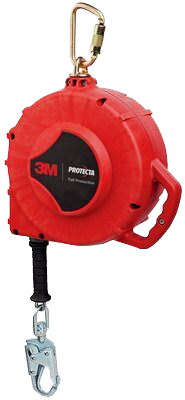At Northern Strands, we are often asked questions regarding Fall Protection regulations and equipment recertification. One of the most common questions we receive is, "How are Self-Retracting Lifelines rated in Canada, and when do we need to recertify them?"
Here is how the governing body classes and rates SRL’s in Canada. Most of what you will find online is written in the US and the standards they use for fall protection are the American National Standards Institute (ANSI) Z359 series, in Canada, we go by a different standard, CSA Z259.
Where SRLs are concerned, the specific volume of the CSA Standards that pertains to them is the CSA Z259.2.2-17 standard. The “-17” part means that it was last updated in 2017, but did not come into force until 2019.
This iteration of the standard also introduced a new “revalidation schedule”:
| Type of use | Application Examples | Example Conditions of Use | User Inspection Frequency | Competent Person Inspection Frequency | Revalidation Frequency |
| Infrequent to light | Rescue/confined space, factory maintenance | Good storage conditions, indoor use, room temperature, clean environments | Before each use | Annually | At least every 5 years but not more than the intervals required by the manufacturer |
| Moderate to heavy | Transportation, residential construction, utilities, warehouse | Fair storage conditions, indoor & extended outdoor use, various temperatures, clean & dusty environments | Before each use | Semi-annually to annually | At least every 2 years but not more than intervals required by the manufacturer |
| Severe to continuous | Commercial construction, oil and gas, mining, foundry | Harsh storage conditions, prolonged or continuous use, all temperatures, dirty environments | Before each use | Quarterly to semi-annually | At least annually but not more than the intervals required by the manufacturer |
This standard’s predecessor, the Z259.2.2-14, classified SRLs into one of three types:
Type 1 – SRL length is 3m or less
Type 2 – SRL Length is greater than 3m, must be recertified 2 years after date of manufacturer and annually thereafter
Type 3 – SRL is designed with a retrieval system, every manufacturer is different, but it is usually some version of a hand crank on the SRL case. These also were required to be recertified 2 years after the date of manufacturer and annually thereafter
However, with the publication of the Z259.2.2-17 standard came a new classification system:
SRL: Self Retracting Lifelines
SRL-LE: Self Retracting Lifeline, Leading Edge (where the lifeline might come in contact with a sharp edge or abrasive surface during a fall)
SRL – R: Self Retracting Lifeline, Rescue (retrieval system on the SRL)
SRL – LE – R: Self Retracting Lifeline, Leading Edge Rescue (combines the benefits of leading-edge protection and retrieval SRL)
The confusing part for everyone is that manufacturers are still producing and selling units that meet the specifications of both versions of the standard, but it’s important to know that ultimately either version of the standard is acceptable under provincial legislation. The most important thing is to find an SRL that suits your needs and keeps its users safe. An added benefit of seeking out an SRL that complies with the newer, “-17” version of the standard is that it may not have to be sent in for recertification as frequently depending on the conditions you are using them in.
Bring your companies SRL's to Northern Strands to have them revalidated / recertified. Or alternatively, you can purchase a new 3M SLR from Northern Strands.
Phone: 306-242-7073
email: sales@northernstrands.com
